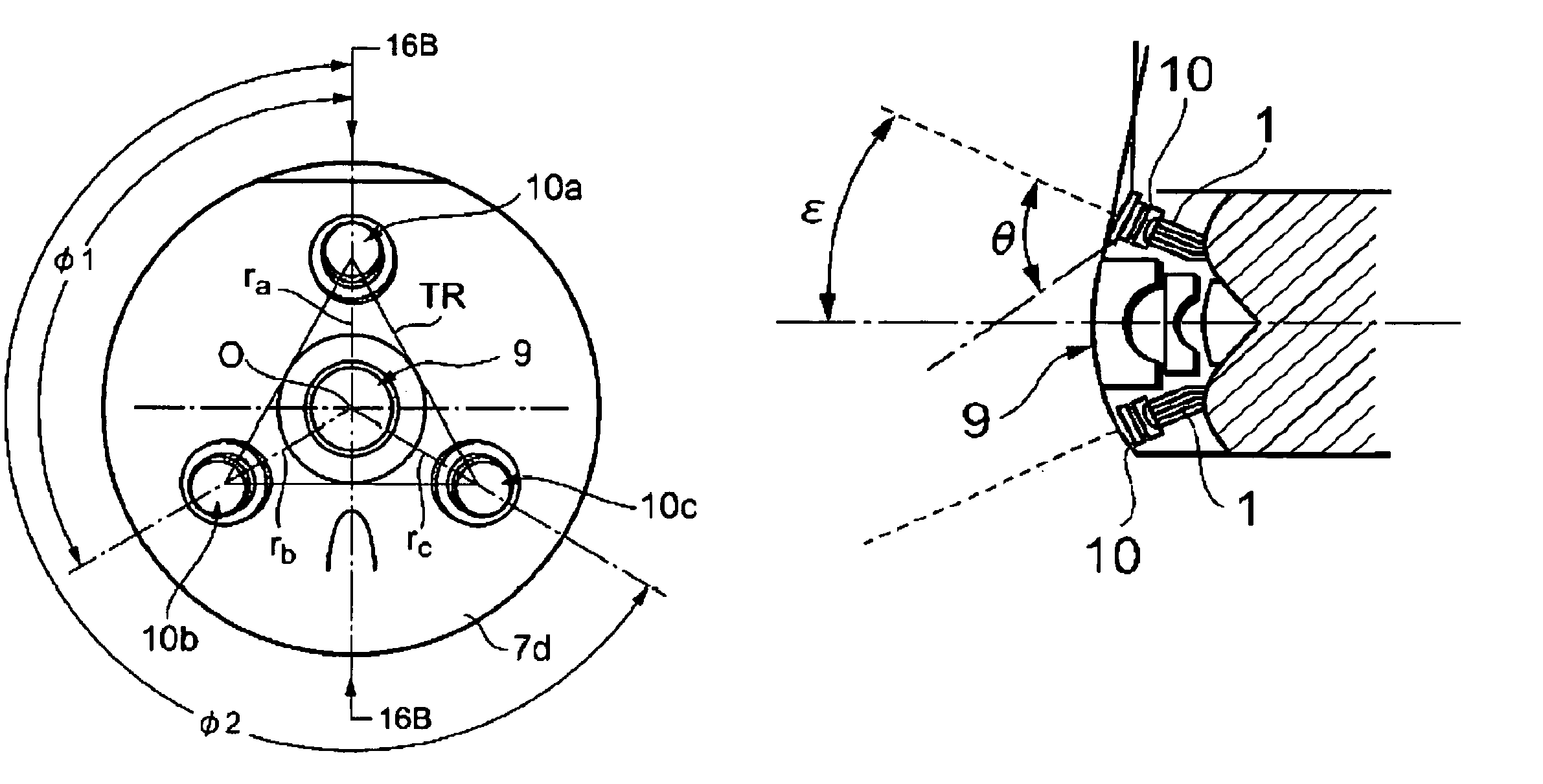Optical system for endoscopes
an endoscope and optical system technology, applied in the field of optical systems for endoscopes, can solve the problems of reducing the diameter of the endoscope, not being realistic, and increasing the total length of the illumination optical system b>6/b>
- Summary
- Abstract
- Description
- Claims
- Application Information
AI Technical Summary
Benefits of technology
Problems solved by technology
Method used
Image
Examples
embodiment 2
[0126]The basic arrangement of the endoscope optical system of Embodiment 2 is substantially the same as that of Embodiment 1, and is different from that of Embodiment 1 in that the convex surface of the illumination optical system 10b is finished as a polished surface. The illumination optical system 10b has light distribution characteristics f(θ) shown in FIG. 14. Differential values df(θ) / dθ of the light distribution characteristics f(θ) are shown in FIG. 15. As shown in FIG. 15, the differential value df(θ) / dθ of the light distribution characteristics f(θ) retains a value of 0.02 or less at an angle θ of emission in the range of 5° to 85°, and further retains a value of 0.015 or less at the angle θ of emission in the range of 65° to 80°. Therefore it is possible to give the impression that no change of brightness is felt from the visual field center to the periphery. Furthermore, the illuminance ratio f(θ) at an emission angle θ of 80° is 0.11, and the system also has a superior...
embodiment 3
[0129]FIGS. 16A and 16B are diagrams showing Embodiment 3 of the present invention, FIG. 16A is a diagram of a layout of an endoscope optical system as viewed from the object side, and FIG. 16B is a diagram showing a part of a section along line 16B-16B of FIG. 16A.
[0130]The endoscope optical system of Embodiment 3 is provided with an observation optical system 9 having a field angle of 170°, and three illumination optical systems 10a, 10b and 10c. The distal end surface 7d of the endoscope is formed into a bullet shape in which the observation optical system is at the vertex. As viewed from the front (object side), the three illumination optical systems 10a, 10b and 10c are arranged in such a manner as to surround the observation optical system 9. The three illumination optical systems 10a, 10b and 10c are oblique in such a manner as to direct emission surfaces thereof outwardly with respect to the optical axis of the observation optical system in accordance with the bullet shape o...
embodiment 4
[0140]FIG. 21 is an explanatory view showing the layout of an endoscope optical system as viewed from the object side according to Embodiment 4 of the present invention.
[0141]The endoscope optical system of Embodiment 4 is provided with an observation optical system 9 having a field angle of 160°, and three illumination optical systems 10a, 10b, and 10c. The distal end surface 7d of the endoscope is formed into a substantially flat surface. As viewed from the front (object side), the three illumination optical systems 10a, 10b and 10c are arranged in such a manner as to surround the observation optical system 9. Each of the three illumination optical systems 10a, 10b and 10c comprise one positive lens as shown in FIG. 7. The systems satisfy the conditions (1) and (2), and are appropriate as those for combined use with an observation optical system having a large angle of field.
[0142]Moreover, as shown in FIG. 21, the three illumination optical systems 10a, 10b and 10c are arranged i...
PUM
 Login to View More
Login to View More Abstract
Description
Claims
Application Information
 Login to View More
Login to View More - R&D
- Intellectual Property
- Life Sciences
- Materials
- Tech Scout
- Unparalleled Data Quality
- Higher Quality Content
- 60% Fewer Hallucinations
Browse by: Latest US Patents, China's latest patents, Technical Efficacy Thesaurus, Application Domain, Technology Topic, Popular Technical Reports.
© 2025 PatSnap. All rights reserved.Legal|Privacy policy|Modern Slavery Act Transparency Statement|Sitemap|About US| Contact US: help@patsnap.com



